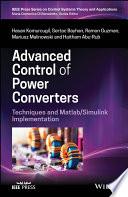How to Use This Book
Anyone who has been teaching for a number ofyears blows thatstudents, particularly those in medical school or In other programs within the health sciences, do not have an infinite amount of time to study or to review any given course. Therefore, this book was designed to make it easier for you to review biochemistry only at the depth you require, depending on the purpose of your review and the amount of time you have available.
Each chapter begins with an overview In a shaded box thatserves as asummation ofthe topics that will be covered in the chapter. They also help you review essential information qulcldy and reinforce key concepts.
Clinical Correlates in each chapter provide additional clinical insight and relate basic biochemistry to actual medical practice. They are designed to challenge you and encourage assimilation of information.
After you finish a chapteli try the questions and compare your answers with those in the explanations. As biochemistry is being integrated with other disciplines on NBME exams, a number of clinical questions require knowledge from outside of a biochemistry class and has not been reviewed in this text. If you have difficulty with the questions, review the chapter and also look up relevant material from other courses In your curriculum for those questions that Integrate biochemistry with another dJsclpllne. In addition to the questions In the print book, theze are bonus questions available in the onllne supplement for further self-assessment and exam practice.
By following the process outlined above, you can save time by reviewing only the topics you need to review and by concentrating only on the details you have forgotten.
Michael A. Lieberman, PhD Rick Ricer, MD
Preface v Acknowledgments vi How to Use 1his Book vil
1. FUEL METABOLISM AND NUTRITION: BASIC PRINCIPLES 1
Overview I
I. Metabolic Puels and Dietary Components I
II. The Fed or Absorptive State 5
Ill. Fasting 7
IV. Prolonged Fasting (Starvation) 9 Review Test 12
2. BASIC ASPECTS OF BIOCHEMISTRY: ORGANIC CHEMISTRY, ACID-BASE CHEMISTRY, AMINO ACIDS, PROTEIN STRUCTURE AND FUNCTION, AND ENZVME KINETICS 20
Overview 20
I. A BriefReview of Organic Chemistry 20
II. Acids, Bases, and Buffers 21
Ill. Amino Acids and Peptide Bonds 23
IV. Protein Structure 26
V. Enzymes 35 Review Test 40
3. GENE EXPRESSION (TRANSCRIPTION), SYNTHESIS OF PROTEINS (TRANSLATION), AND REGULATION OF GENE
EXPRESSION 52
Overview 52
I. Nucleic Acid Structure 53
II. Synthesis of DNA (Replication) 59
Ill. Synthesis of RNA (Transcription) 66
IV. Protein Synthesis (Translation of mRNA) 70
V. Regulation of Protein Synthesis 77
VI. Recombinant DNA and Medicine 86 Review Test 96
IX. Triplet Repeat Expansions 371
X. Imprinting 371
XI. Epigenetics 373
XII. The Genetics of Tumor Suppressors 373
XIII. Metabolic Genetic Disorders Involving Carbohydrate and Lipid Pathways 375 Review Test 376
Comprehensive Examination 385 Index 421
CUNICAL CORRELATES
The thyroid gland produces thyroid hormone, which has profound effects on a person's BMR. One of the most common forms of hyperthyroidism is Graves diHaH. In this disease, the body produces antibodies that stimulate the thyroid gland to produce excess thyroid hormone. The disease is characterized by an elented BMR, an enlarged thyroid {goiter), protruding eyes, nervousness, tremors, palpitations, excessive perspiration, and weight loss. Hypothyroidism results from a deficiency af tflyroid honnane. The BMR is dacre1S1d, and mucopolysa ccharides accumulate on the vocal cords and in subcutaneous tissue. The common symptoms are lethargy, dry skin, a husky voice, decreased memory, and weight gain.
D. Body man index (BMI) is utilized to determine a heahhy body weight 1. The BMI is defined as the value obtained when the weight (in kilogram) is divided by the height (in meters) squared:
BMl=kg/m2
1. Table 1.2 indicates the interpretation ofBMI values.
CLINICAL CORRELATES
There are a number of disorders related to abnormal BM I values, some of which are lifestyle induced. Obnity is associated with problems such as hypertension, cardioqscular disease, and type 2 diabetes mtllitus (DM). The treatment involves altering the lifestyle, particularly by decreasing food intake and increasing exercise. Type 2 diabetes is the result of reduced cellular responsiveness to insulin. Insulin production, initially, is normal or even increased when compared with nonna I. Anorexia narvau is characterized by ult-induced weight 1011. Those frequently affected include women wha, in spite of an emaciated appearance, often claim to be "fat It is partially a behavioral problem; those afflicted are obsessed with losing weight People with bulimia suffer from binges of overeating, followed by self-induced v•iting to avoid gaining weight
E. Olflar dietary requirements and recommendations far normal adults 1. Lipids
a. Fat should constitute between 20% and 35% of the total calories, with saturated fatty acids accounting for 10% or less of that total.
b. Cholesterol intake should be no more than 300 mg/day for healthy individuals and less than 200 mg/day in those with established atherosclerosis.
c. E11ential fatty acids (linoleic and u-linolenic acids) are the precursors of the polyunsaturated. fatty acids required for the synthesis of prostaglandins and other eicOMnoids, such as arachidonic acid and eicosapentaenoic acid (EPA). These essential fatty acids can be found in high levels in fish oils.
t a b I e 1.2
Interpretation of BMI Values
Clalllllcttlm BMl(lct/li'I
Underweight <18.50
Nonnel renge 18.SIHUI
Overweight >2.5.00
Praobese 25.IJIH9.99
Obese :<!:30.00
Obese, class I 311.110--34.99
Obese, class II 35.00-39.99
Obese, class Ill (morbidly obesel i!!:40.00
RMI, balfy mass inde:x.
(2) Enzymes with maltase and isomaltase activity (such as gluco1myl111) are foWld in complexes located on the surface of the bl'U8h border of intestlnal epithelial cells. They complete the conversion of starch to glucose.
II. Sucrose and lactose (ingested dlsaccbarldes) are cleaved by enzymes that are part of the complexes located on the surface of intestlnal epithellal cells.
(1) Suaasa (as part ofthe suc11l9-isom11tase camplu) converts sucrose to fructose and gluCOlt. (2) Lact111 converts lactose to glucose and galactole.
c. Mon011cch1rid11 (mainly glucoH and some fructOM and galactoH) are absorbed by the intestinal epithelial cells and pass into the blood. The intestinal epithelial cells do not o:iidize carbohydrates as an energy source because they prefer to utilize glutamine as an energy source.
2. Fats
a. Triacylglycerol is the primary dietary fat. It is obtained from the fat of the plants and animals that serve as food.
II. The trlacylglycerols are emulsified in the intestine by bile salts and digested by pancreatic lipeu to 2-monoacylglycerols and fatty acids, which are packaged Into micelles (solubilized by bile salts) and absorbed into intestinal epithelial cells. where they are recO.tIVerted to triacylglycerols.
c. After digestion and resynthesls. the trlacylglycerols are packaged In chylomicrons, which first enter the lymph and then the blood.
3. Proteins
a. Proteins are digeabd first by pepsin in the stomach and then bya series of enzymes in the intestine.
(1) The pancreas produces precursors of trypsin. chymotrypsin. elasta11, and carllox:ypeptidHH, which are activated and act in the lumen of the intestine.
(2) Aminopeptida111. dipeptidasn. and tripeptidasas are associated with the intestinal epithelial cells.
II. Proteins are ultimately degraded to a mixture of amino acids, which then enter intestinal epithelial cells, where some amino acids are metabolized. The remainder pass Into the blood for distribution to the other tissues of the body.
CLINICAL CORRELATES
Cystic fibro1i1 is the most common lethal genetic di1111e among the Caucasian population of the United States. Proteins of cllloride ion cll11nel1 are defective, and both endocrine and exocrine gland functions are affected. Pulmonary disease and pancreatic insufficiency frequently occur. Food, particularly fats and proteins, are only partially digested, and nutritional deficiencies result. Nontropical sprue (adult celiac disease) results from a reaction to glutan, a protein found in grains. The intestinal epithelial cells are damaged, and malabsorption results. Common symptoms are staatormea, diarrhea, and weight loss.
B. Digestive products in tfte blood
1. Honnone levels change when the products of digestion enter the blood.
1. Insulin lnel1 riu principally as a result of increased blood glucose lnel1 and, to a lesser extent, increased blood levels of amino acids.
II. Glucagon Inell fall in response to glucose but rise in response to amino acids. Overall. after a mixed meal (containing carbohydrate, fat, and protein), glucagon levels remain fairly constant or are reduced slighdy in the blood.
2. Glucose and amino acids leave the intestinal epithelial cells and travel through the hepatic portal vein to the liver.
CLINICAL
CORRELATES Type 1 DM leads to difficulty in maintaining appropriate blood glucose levels. In untreated type 1 DM, insulin levels are low or nonexistent because of destruction of the pcells of the pancreas, usually by an autoimmune process. Before insulin became widely available, individuals with type 1 DM behaved metabolically as if 1hey were in a constant state of
2. Production of katone bodies bythe liver
a. As glucagon levels rise, adipose tissue breaks down its triacylglyceral stores into fatty acids and glycerol, which are released into the blood.
b. Through the process of the liver converts the fatty acids to acetyl coenzyme A (acetyl CoA).
c. Acetyl CoA is used by the liver for the synthesis of the ketone bodies, acetoacatate and JS-hydraxybutyrata. The liver cannot oxidize ketone bodies and hence releases them into the blood.
B. Adipose tissue during fasting
1. As glucagon levels rise, adipose triacylglycarol storas are mabilizad. The triacylglycerol i& degraded to three free fatty acids and glyceroL which enter the circulation. The liver converts the fatty acids to ketone bodies and the glycerol to glucose.
2. Tissues such 88 muscle oxidize the fatty acids to C02 and H 20.
C. Muscle during fasting
1. Degradation of muscle protein
a. During fasting, muscle protein is degraded, producing amino acids. which are partially metabolized by muscle and released into the blood, mainly as alanine and ghrllmine.
b. nssues such as gut and kid nay metabolize the glutamine.
c. The products (mainlyalanina and glutamine) travel to the liver, where the carbons are converted to glucose or ketone bodies and the nitrogen to urea.
2. Oxidation of fatty acids and kalDna bodiu
a. During fasting, muscle oxidizes fatty acids released from adipose tissue and ketone bodies produced by the liver.
b. During 1X1rci11, muscle can also use its own glycogen stores 88 well as glucose, fatty acids, and ketone bodies from the blood.
IV. PROLONGED FASTING (STARVATION)
• In starvation (prolonged fasting), muscle decreases its use of ketone bodies. As a result, ketone body levels ri&e in the blood, and the brain uses them for energy. Consequently, the brain needs less glucose, and gluconeogenesis slows down. sparing muscle protein. This occurs after approximately 3 to 4 days of starvation.
These changes in the fuel utilization patterns of various tissues enable us to survive for extended periods of time without food.
A. Metabolic changes in starvation (Fig. 1.3)
When the body enters the starved state, after 3 to 5 days of fasting, changes occur in the use of fuel stores.
1. Muscle decreases its use of ketone bodies and oxidizes fatty acids as its primary energy source.
2. Because ofthe decreased use by muscle, blood kalana body levels rise.
3. The brain then takes up and oxidiz11 the ketone bodies to derive energy. Consequently, the brain decreases its use of glucose, although glucose is still a major fuel for the brain.
4. Llver gluconeogenesis decreases.
5. Muscle protein is spared (i.e., less muscle protein is degraded to provide amino acids for gluconeogenesis).
6. Because of decreased conversion of amino acids to glucose, 1111 urn is produced from amino acid nitrogen in starvation than after an overnight fast.
1. Table 1.3 summarizes the metabolic changes during prolonged fasting as compared to fasting fur 24 hours.
Review Test
Quuttom 1 to 10 examine your basic knowledge offuel metaboll$m and are not In the standard cUnicaI vignette format.
Quutiom 11 to 35 are clinically relevant, USMLB-style questions. For questions that require calculation ofBMR values, use the appro:dmation equation of24 caloriu per kg per day for both mm and wo1'U!n.
B11ic Knowledge Quntion1
Questions 1 to 4
Match each of the characteristics below with the source of stored energy that it best describes. An answer (choices A through D) may be used once, more than once, or not at all.
1. The largest amount of A. Protein stored energy in the body
2. Theenergysource B. Triacylglycerol reserved for strenuous muscular activity
3. The primary sowce of C. Liver glycogen carbon for malnta.lnlng blood glucose levels during an overntght fast
4. The major precursor of urea in the urine
D.Muscle glycogen
5. A 32-year-oldmale is on a weight-maintenance diet, so he does not want to lose or gain any weight. Which amino acid must be present in the diet so the patient does not go into a negative nitrogen balance?
(A) Alanine
(B) Arginine
(C) Glycine
(D) Threonine
(E) Serine
Questions &to 10
Match each of the characteristics below with the tissue it best describes. An answer (cholcea
A th.rough D) ma:y be used once, more than once, or not at all.
6. After a fast of a rew days, A. Llver ketone bodies become an important fuel
1. Ketone bodies are used as B. Brain a fuel after an overnight fast
8. Fatty acids are not a significant C. Skeletal fuel source at any time muscle
9. During starvation, this tissue D. Red uses amino acids to maintain blood blood glucose levels cells
10. This tissue converts lactate from muscle to a fuel for other tissues
Board-style Qumions
Questions 11 to 15 are based an the following patient
A young woman (5' 3" tall, 1.6 m) who has a sedentary job and does not exercise consulted a physician about her weight, which was 110 lb (50 leg). A dietary history indicates that she eats approximately 100 g of carbohydrate, 20 g of protein, and 40 g of rat dally.
11. Whatisthiswoman'sBMI?
(A) 16.5
(B) 17.5
(C) 18.5
(D) 19.5
(E) 20.5
12. According to the woman's BMI, into what classification does her weight and height place her?
(A) Underweight (B) Normal range (C) Overweight{preobese)
(D) Class I obese range (E) Class II obese range
13. How many calories (kcal) does this woman consume each day?
(A) 1,440 (B) 1,340 (C) 940 (D) 840 (E) 640
14. What is the woman's approximate DEE in calories (kilocalories) per day at this weight?
(A) 1,200 (B) 1,560 (C) 1,800 (D) 2,640 (E) 3,432
15. On the basis of the woman's current weight, diet, and sedentary lifestyle, which one of the following does the physician correctly recommend that she should undertake?
(A) Increase her exercise level
(B) Decrease her protein intake
(C) Increase her caloric intake
(D) Decrease her fat intake to less than 30% of her total calories (E) Decrease her caloric intake
16. Consider a normal 25-year-old man, about 70 kg in weight, who has been shipwrecked on a desert island, with no food available, but plenty of freshwater. Which of the following fuel stores is least likely to provide significant calories to the man?
(A) Adipose triacylglycerol
(B) Liver glycogen
(BJ
(C) Muscle glycogen
(D) Muscle protein (E) Adipose triacylglycerol and liver glycogen
17. The shipwrecked man described in the previous question will have most of his fuel stored as triacylglycerol instead of protein in muscle because of triacylglycerol stores containing which of the following as compared to protein stores?
(A) More calories and more water
(B) Less calories and less water
(C) Less calories and more water
(D) More calories and less water
(E) Equal calories and less water
18. In the fasting state, which one of the following is utilized by the liver for gluconeogenesis?
(A) Glycerol
(B) Even-chain fatty acids
(C) Liver glycogen
(D) Ketone bodies
(E) Essential fatty acids
19. A medical student has been studying for exams and neglects to eat anything for 12 hours. At this point, the student opens a large bag of pretzels and eats every one of them in a short period. Which one of the following effects will this meal have on the student's metabolic state?
(A) Liver glycogen stores will be replenished.
(B) The rate of gluconeogenesis will be increased.
(C) The rate at which fatty acids are converted to adipose triacylglycerols will be reduced.
(D) Blood glucagon levels will increase.
(E) Glucose will be oxidized to lactate by the brain and to COz and HiiO by the red blood cells.
20. A newly diagnosed patient with type 2 diabetes was trying to lose weight and reduced the calories for the evening meal before going to sleep for the evening. During the overnight fast, the patient can utilize which of the following fuels for energy? Choose the one best answer.
(CJ Yes Yes No Yes
(DI No No Vas Yes
(El No Yes No No
(Fl No No Yes Yes
21. A physician working in a refugee camp in Africa notices a fair number of children with emaciated arms and legs, yet a large protruding stomach and abdomen. An analysis of the children's blood would show significantly reduced levels of which one of the following as compared with those in a healthy child?
(A) Glucose
(B) Ketone bodies
(C) Albumin
(D) Fatty acids
(E) Glycogen
Questions 22 to 25 are based on the following patient:
A 50-year-old male with a "pot belly" and a strong family history of heart attacks is going to his physician for advice on how to lose weight. He weighs 220 lb (100 kg) and is about 6' tall (1.85 m). His lifestyle can be best described as sedentary.
22. What is this patient's BMI? (A) 24 (B) 29 (C) 31
(D) 36 (E) 40
23. Into which of the following categories does his BMI place him?
(A) Underweight
(B) Healthy (C) Overweight (preobese) (D) Obese (class I) (E) Obese (class II)
24. How many k:ilocalories per day would the patient need to maintain this weight?
(A) 2,400 (B) 2,620 (C) 3,120 (D) 3,620 (E) 3,950
25. For which of the following disease processes is this patient at higher risk?
(A) Type lDM
(B) Insulin resistance syndrome (C) Gaucher disease (D) Lowbloodpressure (E) Sickle cell disease
26. Which of the following metabolic patterns would be observed in a person after 1 week of starvation? Choose the one best answer.
Glycogen Content Bniin u.. of Fu.ls
(Al Glucose only
Inhibited (Bl Glucose and ketone bodies
Activated (CJ Ketone bodies only
Inhibited (DI Fatty acids and ketone bodies
(E) Glucose and fatty acids
XI. A newly diagnosed patient with type 1 diabetes has mistakenly taken an overdose of insulin before going to sleep for the evening. During the overnight fast, the patient can utilize which of the following fuels for energy? Choose the one best answer.
Adipose Triacylglyi:erol
Glycagen Mu1cle Prutein (Al Yes
(Bl Yes
(CJ Yes
(DI No
(El No
(FJ
12. The answer is B. According to Table 1.2, her BMI of 19.5 places the woman at the lower end of the normal range. Underweight is indicated by a BMI ofless than 18.5; preobesity occurs above a BMI of 25, but less than 30. Class I obesity is indicated by a BMI between 30 and 35, and class II obesity by a BMI between 35 and 40.
13. The answer is D. The woman consumes 400 calories (kcal) of carbohydrate (100 g X 4 kcal/g), 80 calories of protein (20 X 4), and360 calories of fat (40 X 9) for a total of840 calories daily.
14. The answer is B. This woman's DEE is 1,560 calories (kcal). DEE equals BMR plus physical activity. Her weight is 110 lb/2.2 = 50 kg. HerBMR (about24kcal/kg) is 50 kg X 24 = 1,200 kcal/day. She is sedentary and needs only 360 additional kcal (30% of her BMR) to support her physical activity. Therefore, she needs 1,200 + 360 = 1,560 kcal each day.
15. The answer is C. Because her caloric intake (840 kcal/day) is less than her expenditure ( 1,560 kcal/ day), the woman is losing weight. She needs to increase her caloric intake. Exercise would cause her to lose more weight. She is probably in negative nitrogen balance because her protein intake is low ( 0.8 g/kg/day is recommended). Although her fat intake is 43% of her total calories and recommended levels are less than 30%, she should increase her total calories by increasing her carbohydrate and protein intake rather than decreasing her fat intake.
16. The answer is B. As indicated in Table 1.1, in the average (70 kg) man, adipose tissue contains 15 kg of fat or 135,000 calories (kcal). Llver glycogen contains about 0.08 kg of carbohydrate (320 calories), and muscle glycogen contains about 0.15 kg of carbohydrate (600 calories). In addition, about 6 kg of muscle protein (24,000 calories) can be used as fuel. Therefore, liver glycogen contains the fewest available calories.
17. The answer is D. Adipose tissue contains more calories (kilo calories) and less water than does muscle protein. Triacylglycerol stored in adipose tissue contains 9 kcal/ g, and adipose tissue has about 15% water. Muscle protein contains 4 kcal/ g and has about 80% water.
18. The answer is A. Carbons from lactate, propionate (from odd-chain fatty acids and certain amino acids), glycerol (from fat stores), and amino acids (from muscle) can be used forgluconeogenesis. Fatty acids and ketone bodies are directly utilized for energy and are not used for gluconeogenesis. The end product of even-chain fatty acid oxidation is acetyl CoA, which cannot be used as a precursor for net glucose production. Liver glycogen produces glucose through glycogenolysis.
19. The answer is A. After a meal of carbohydrates (the major ingredient of pretzels), glycogen is stored in the liver and in muscle, and triacylglycerols are stored in adipose tissue. Owing to the rise in glucose level in the blood (from the carbohydrates in the pretzels), insulin is released from the pancreas, and the level of glucagon in the blood decreases. Because blood glucose levels have increased, there is no longer a need for the liver to synthesize glucose, and gluconeogenesis decreases. The change in insulin to glucagon ratio also inhibits the breakdown oftria· cylglycerols and favors their synthesis. The brain oxidizes glucose to C02 and H20, whereas the red blood cells produce lactate from glucose because red blood cells cannot carry out aerobic metabolism.
20. The answer is C. Adipose triacylglycerol is the major fuel store of the body. Liver glycogen is used to maintain blood glucose during early fasting. Protein can be degraded to a limited extent and used as a source of fuel. Muscle glycogen is oxidized for muscle contraction and does not contribute to maintenance of blood glucose under any condition.
21. The answer is C. The children are exhibiting the effects of kwashiorkor, a disorder resulting from adequate calorie intake but insufficient calories from protein. This results in the liver producing less serum albumin (because of the lack of essential amino acids), which affects the osmotic balance of the blood and the fluid in the interstitial spaces. Owing to the reduction in osmotic pressure of the blood, water leaves the blood and enters the interstitial spaces, producing edema in the children {which leads to the expanded abdomen). The children are degrading muscle protein to allow the synthesis of new protein (because of a lack of essential amino acids), and this
leads to the wasting of the arms and legs of children with this disorder. The children will exhibit normal or slightly elevated levels of ketone bodies and fatty acids in the blood because the diet is calorie sufficient. Glycogen levels may only be slightly reduced (because the diet is calorie sufficient), but glycogen is not found in the blood. Glucose levels will be only slightly reduced because gluconeogenesis will keep glucose levels near normal.
22. The answer is B. The BMI is equal to kg/m2, which in this case is equal to 100/1.852 , which is about29.
23. The answar is C. The patient is in the overweight (preobese) category with a BMI of29.As indicated in Table 1.2, a BMI ofless than 18.5 is the underweight category, a BMI between 18.5 and 24.9 is the healthy range, a BMI between 25 and 30 is the overweight (preobese) category, and any BMI of 30 or above is considered the obese range. Class I obese is between 30 and 35, whereas class II obese is between 35 and 40. Class III obesity, or morbidly obese, is the classification for individuals with a BMI of 40 or higher.
24. The answer is C. The DEE is equal to the BMR plus physical activity factor. For the patient in question, the BMR = 24kcal/kg/day X 100 kg, or 2,400 kcal/day. Because the patient is seden· tary, the activity level is 30% that of the BMR, or 720 kcal/ day. The overall daily needs are therefore 2,400+ 720 kcal/day, or 3,120 kcal/day. If the patient consumes less than 3,000 kcal/day, or increases his physical activity level, then weight loss would result.
25. The answer is B. The patient's weight, age, and activity put him at higher risk for insulin resistance syndrome. The entire syndrome includes hypertension, DM (type 2), decreased high-density lipoprotein levels, increased triglyceride levels, increased urate, increased levels of plasminogen activator inhibitor 1, nonalcoholic fatty liver, central obesity, and polycystic ovary syndrome (PCOS) (in females). Insulin resistance syndrome leads to early atherosclerosis throughout the entire body. The patient is not at increased risk for type 1 DM, because that is the result of an autoimmune condition that destroys the cells of the pancreas such that insulin can no longer be produced. The lifestyle exhibited by the patient has not been linked to autoimmune disorders. Gaucher disease is a disorder of the enzyme P-glucocerebrosidase and is an autosomal recessive disorder. Because this disease is an inherited disorder, the patient's lifestyle does not increase his risk of having this disease. The patient's increasing weight might lead to increased blood pressure but not to reduced blood pressure. Sickle cell disease is another autosomal recessive disorder leading to an altered P-globin gene product, and like Gaucher disease, it is an inherited disorder that is not altered by the patient's lifestyle.
26. The answer is B. After 3 to 5 days of starvation, the brain begins to use ketone bodies, in addition to glucose, as a fuel source. Glycogen stores in the liver are depleted (<5% of normal) during the first 30 hours of fasting. Inadequate protein in the diet results in a negative nitrogen balance. Blood glucose levels are being maintained by gluconeogenesis, using lactate (from red blood cells), glycerol (from triacylglycerol), and amino acids (from the degradation of muscle proteins) as carbon sources.
rJ. The answer is E. In the presence of an excess of insulin, adipose triacylglycerol will not be degraded into glycerol and three fatty acids, so fatty acids are not released into the circulation for use by the other tissues. Liver glycogen will not be degraded because of the high insulin levels (insulin promotes glycogen synthesis), and muscle glycogen does not contribute to maintenance of blood glucose. In the presence of insulin, muscle protein will not be degraded to provide amino acids for other tissues to utilize for energy. This patient may become comatose on account of low blood glucose levels because the insulin will stimulate serum glucose to enter the muscle and fat cells at a rate faster than it is being released by the liver.
28. The answer is C. All of these patients will lose weight-the anorexic patients because of insuffi· cient calories in the diet, the patients with type I DM because oflow insulin levels that result in the excretion of glucose and ketone bodies in the urine, those with hyperthyroidism because of an increased BMR, and those with nontropical sprue because of decreased absorption of food from the gut. The untreated diabetic patients will have high ketone levels because oflow insulin. Ketone levels may be elevated in anorexia and also in sprue, because of a reduction in levels












